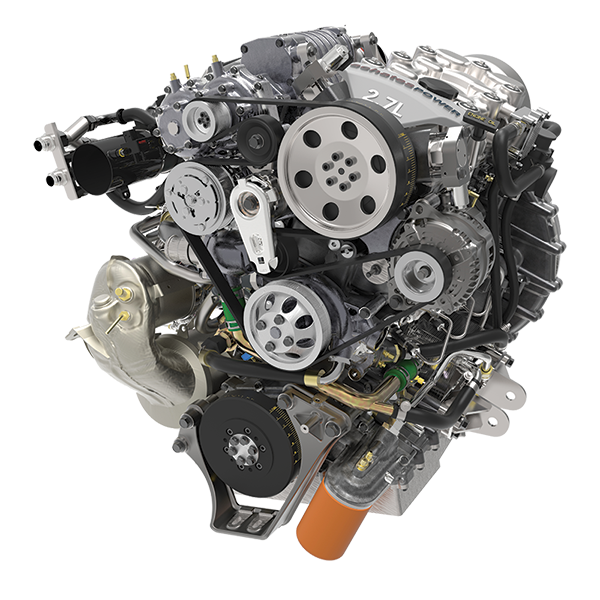Opposed-Piston Engine Architecture
With two pistons per cylinder, working in opposite reciprocating action, these engines do not need cylinder heads which are a major contributor to heat losses in conventional engines. Ports in the cylinder walls replace the complex poppet valves and friction-creating valve trains of conventional engines. The intake ports at one end of the cylinder and exhaust ports at the other are opened by the piston motion and enable both efficient uniflow air scavenging and flexible control over the scavenging process.


Two-Stroke Combustion Cycle
A two-stroke engine produces twice as many power strokes per revolution as its four-stroke equivalent. This advantage leads to smaller displacement engines for similar performance, and lower in-cylinder pressure to lower emissions compared to four-stroke engines.
There is a common misperception that two-stroke engines, by their nature, are dirty and noisy. Achates Power engines not only meet the most stringent environmental standards in the world, but they are also used to demonstrate that substantially cleaner transportation engines are possible. Two-stroke engines used in small equipment like string trimmers and chainsaws often use a total-loss lubrication system where oil is mixed with the fuel. By contrast, Achates Power designs use a separate lubrication circuit common to other advanced transportation engines.

Proven Efficiency with Positive Results
Years of R&D and testing – including the development work on the light-duty pickup truck demonstrator, enabled by funding by the DOE APRA-E and in partnership with Aramco and heavy-duty engine program for the California Air Resources Board — support the Opposed-Piston Engine’s ability to meet current and future federal and state regulatory vehicle emissions and fuel economy standards, providing a new benchmark in efficiency.
